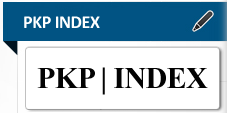Penentuan Ketebalan Sedimen pada Segmen Kumering, Sesar Sumatra di Daerah Liwa Lampung Barat dengan Menggunakan Metode Seismik Aktif MASW
Abstract
ABSTRAK
Dampak energi yang dilepas oleh gempa bumi Liwa Mw 7.0 tahun 1994 pada segmen Kumering daerah selatan Sesar Sumatra mengakitbatkan hilangnya nyawa manusia dan kerusakan berat pada infrastuktur. Tingkat kerusakan gempa bumi selain dipengaruhi oleh besarnya magnitudo gempa bumi, juga dikontrol oleh struktur bawah permukaan dan ketebalan sedimen pada daerah itu. Penelitian ini bertujuan untuk mengetahui struktur lapisan bawah permukaan di daerah Liwa melalui pengamatan kecepatan gelombang sekunder (Vs) dan ketebalan sedimen dengan menggunakan metode seismik aktif Multichannel Analysis of Surface Waves (MASW). Survei seismik dengan panjang lintasan total 192 m menggunakan seismograf digital PASI 16S24 dan 24 geophone. Pengolahan data seismik dilakukan dengan menggunakan perangkat lunak seismik komersial ParkSeis. Hasil penelitan menunjukkan bahwa struktur lapisan di daerah Liwa terdiri dari 3 lapisan ketebalan sedimen 15-20 m, nilai Vs sekitar 250-300 m/s dan densitas sekitar 1,7-2,2 gr/cm3 . Lapisan kedua merupakan lapisan transisi antara lapisan sedimen dan lapisan batuan dasar dengan ketebalan rata-rata 5 m dan nilai Vs 600-800 m/s. Selanjutnya lapisan ketiga berada pada kedalaman 25-50 m yang ditandai dengan nilai Vs antara 800-1000 m/s. Lapisan pertama diduga berupa pasir padat menengah/tuff pasiran, dilluvial lunak yang bercampur dengan kerikil dan sisipan lempung yang dipengaruhi oleh keberadaan air bawah tanah dan pergerakan aktif segmen Kumering. Kondisi ini akan memudahkan terjadi amplifikasi atau penguatan terhadap getaran gempa bumi. Oleh karena itu upaya adaptasi dan mitigasi terhadap bencana gempa bumi di daerah Liwa sangat mendesak untuk dilakukan terutama dalam perencanaan.
Kata kunci: Gempa bumi, Multichannel Analysis of Surface Waves (MASW), ketebalan sedimen, struktur lapisan
ABSTRACT
The impact of the energy released by the 1994 Liwa Mw earthquake in 1994 in the Kumering region south of Sumatra Fault, were not only human loss, but also severely damaged infrastructures. The level of earthquake damage is influenced by the size of the earthquake and controlled by the subsurface structure and the sediment thickness. This study aims to determine the local subsurface structure in the Liwa area by observing shear wave velocity (Vs) and sediment thickness using the active seismic method of Multichannel Analysis of Surface Waves (MASW). A seismic survey with a total track seismic length of 192 m has been carried out using digital seismographs PASI 16S24 and 24 geophones, and the seismic data were processed by using ParkSeis commercial seismic software. The results show that the local subsurface structure in the Liwa area consists of 3 layers. Estimated sediment thickness is 15-20 m with Vs value of 250-300 m/s and the density of 1.7-2.2 gr/cm3 . The second layer is a transition layer between the sedimentary layer and the hard bedrock with an average thickness of 5 m and a Vs value of 600-800 m / s. Furthermore, the third layer is at a depth of 25-50 m which is characterized by Vs value between 800-1000 m/s. The first layer is assumed to be a medium dense sand, soft dilluvial sand mixed with gravel/ rigid clay which is influenced by the presence of underground water and the active tectonic movement of the Kumering segment. Hence, this condition will facilitate the amplification or strengthening of earthquake vibrations. Therefore, adaptation and mitigation efforts associated with the earthquake disaster prevention in the Liwa area are very urgent to establish for urban planning.
Keywords: earthquake, Multichannel Analysis of Surface Waves (MASW), sediment’s thickness, structure layer
Full Text:
PDFDOI: http://dx.doi.org/10.34126/jlbg.v12i3.334
Refbacks
- There are currently no refbacks.

This work is licensed under a Creative Commons Attribution-NonCommercial 4.0 International License.









